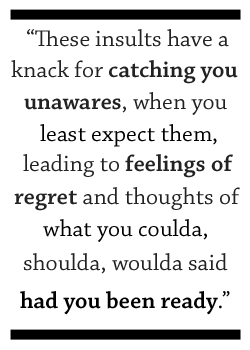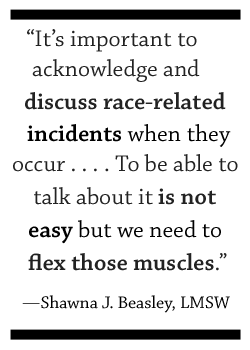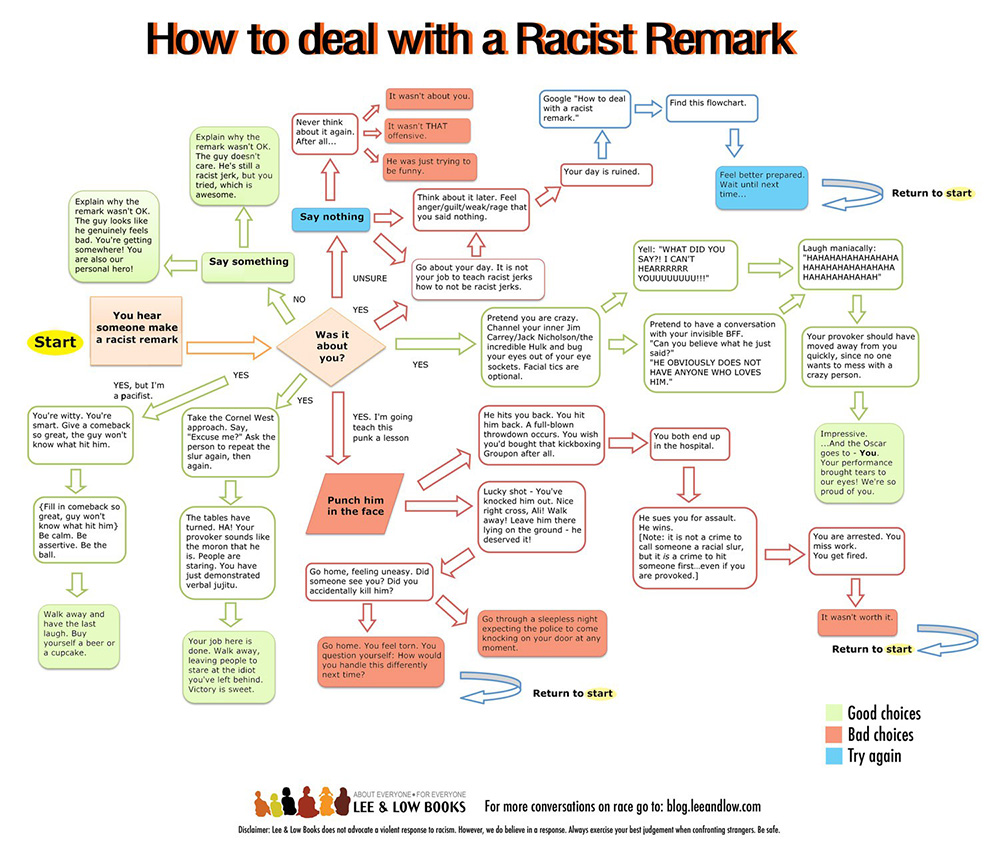A couple of years ago I wrote a post about being called a racial slur in my hometown. The post generated a lively discussion. As a follow-up, we decided to put together a flow chart that illustrates possible courses of action a person might take when an unfortunate incident like this occurs. While choosing to turn and walk away is always an option, those on the receiving end of racism are fully aware that these incidents are upsetting, and sometimes it makes sense to stand up for yourself and others.
You will notice after viewing the flowchart that one of the scenarios suggests you unleash a comeback that is so brilliant it literally freezes the provoker in his or her tracks. We left this scenario up to your imagination, but we thought it might be productive (and fun) to post our best comebacks in the comments section below. That way we can all benefit from one another’s collective wisdom.
*Note: One possible course of action in the flowchart is a violent response. In light of the Trayvon Martin verdict/incident this scenario is highly risky and deeply discouraged.
The biggest and most consistent problem with racial insults is they almost always come out the blue. These insults have a knack for catching you unawares, when you least expect them, leading to feelings of regret and thoughts of what you coulda, shoulda, woulda said had you been ready. So that is what we are going to do here: prepare for the next time it happens.
A couple months ago, I saw the movie 42: The Jackie Robinson Story. There was a scene in which Jackie is brought up to the Brooklyn Dodger’s minor league farm team and an African American journalist named Wendell Smith attempts to prepare Jackie for answering reporters’ questions. Jackie is dismissive, but Wendell persists, telling Jackie, “You can either have the questions come at you slow or fast.”
This exercise is all about having the insults come at you slow. Since the incident has not occurred yet, you have all the time in the world to compose yourself and come up with a great comeback.
And for those of you who think that racism is a thing of the past, read this essay written by WNBA player Brittney Griner, and this article, both published in The New York Times.
 We also consulted a couple of professionals about this subject. Shawna J. Beasley, LMSW, Jewish Board of Family and Children’s Services, is heavily involved with their organization’s initiative to deal with race issues, called Confronting Organizational Racism. She had this to say: “One way to prepare children to confront racism is to teach them about their backgrounds and instill pride in them. We need to arm children with information about who they are.”
We also consulted a couple of professionals about this subject. Shawna J. Beasley, LMSW, Jewish Board of Family and Children’s Services, is heavily involved with their organization’s initiative to deal with race issues, called Confronting Organizational Racism. She had this to say: “One way to prepare children to confront racism is to teach them about their backgrounds and instill pride in them. We need to arm children with information about who they are.”
Shawna goes on to add: “It’s important to acknowledge and discuss race-related incidents when they occur. Some people have these encounters and they’re not sure what happened. Afterwards they say, ‘I don’t know what that was but it didn’t feel good.’ To be able to talk about it is not easy but we need to be able to flex those muscles.”
Kirk Manning, a behavior therapist, MA, Psychology and Education, had this to say: “Looking long term, the United States has become more accepting and we will see fewer incidences of overt racism, which will lessen as each generation becomes better educated. But it is going to take time and change is slow.”
So let’s give this a try. Remember, you can come up with a response for an incident in which you are personally being attacked and/or a response for an incident in which someone else is being verbally attacked. I’ll go first.









